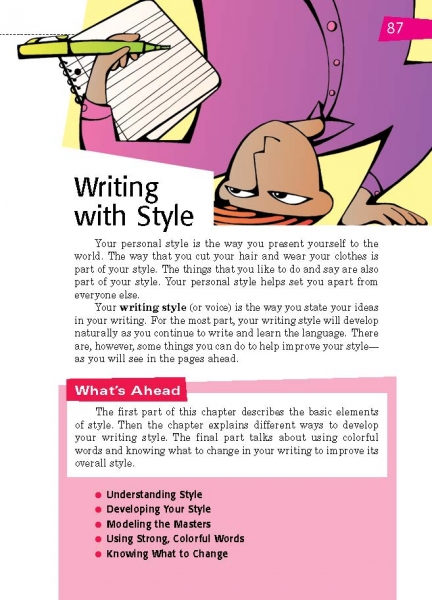Page 087 from

Start-Up Activity
Read and discuss page 87. Then share two or three passages that exhibit stylistic writing and have students identify words and ideas in each one that sound effective (re: that have style). Consider using the passages on page 17–20 in All Write for this activity. Throughout the school year, have students read and listen to a variety of texts so that they internalize effective words and patterns that they may use to express their own ideas.
Think About It
“Write visually, write clearly and make every word count.”
—Gloria D. Miklowitz

Start-Up Activity
Read and discuss page 87. Then share two or three passages that exhibit stylistic writing and have students identify words and ideas in each one that sound effective (re: that have style). Consider using the passages on page 17–20 in All Write for this activity. Throughout the school year, have students read and listen to a variety of texts so that they internalize effective words and patterns that they may use to express their own ideas.
Think About It
“Write visually, write clearly and make every word count.”
—Gloria D. Miklowitz


